The filming locations of John Carpenter's The Fog

- Oops!Something went wrong.Please try again later.
- Oops!Something went wrong.Please try again later.
While in the United Kingdom promoting the British release of his second film, Assault on Precinct 13, director John Carpenter and his then-girlfriend Debra Hill found themselves in Wiltshire one dark and lonely night, pondering over one of the world's wonders. "We went to see Stonehenge and I recall…I kind of came up with the idea of having something come out of the fog," Carpenter said in a 2002 DVD commentary for The Fog, which he recorded alongside Hill. She agreed: "I can remember that fog bank when we were in England. It was just sort of sitting on the horizon way past Stonehenge, and you said at the time 'What if there's something in that fog? Wouldn't that be scary?' And that's how it sort of evolved."
It would be several years before the two developed the story any further. A short while after their trip to England, Carpenter and Hill began production on their first film collaboration. But before that came to fruition, Halloween was shot in May of 1978 around Los Angeles and would go on to become the most profitable independent film of all time, until it was unseated by The Blair Witch Project two decades later. (The Passion of the Christ currently holds the honor.) The story of mad man Michael Myers and his pursuit of a trio of teenage babysitters spawned twelve further films and ignited the slasher sub genre as we know it.
For their follow-up feature, Carpenter and Hill wanted to continue the less-is-more horror ethos that propelled Halloween to box office victory. In fact, they wanted to pull their new film even further towards the low-key, implicit scares that comprised horror films of the '30s and '40s. For inspiration, they returned to their Stonehenge excursion and set pen to paper to find out what might actually happen if, indeed, there was something concealed in the fog. (Stonehenge would also inspire a plot turn in 1982's Halloween III: Season of the Witch, produced by Hill and Carpenter but directed by Tommy Lee Wallace.)
Shot over the course of 30 days from March to April of 1979 — in the Northern California environs of Point Reyes Station, Bodega Bay, and Inverness as well as around Los Angeles and the San Fernando Valley — The Fog tells the story of Antonio Bay, a fictional seaside community which is stricken with paranormal anomalies on the 100th anniversary of its township. There, a local parishioner, hard-drinking Father Malone (the late Hal Holbrook), discovers a diary which implicates his grandfather and five other men in a plot to deliberately wreck a shipping vessel, the Elizabeth Dane, and plunder her gold in order to pay for the town's incorporation.
Could it be that the ghosts of the wrecked ship have returned to town on the centennial anniversary of their murder to eliminate the ancestors of the men who plotted their demise? (As it so happens, that's exactly what's occurring.) It falls to Antonio Bay's formidable DJ, Stevie Wayne (Adrienne Barbeau, Carpenter's then-wife sporting an enviable radio voice in her first feature film role), as well as local Nick Castle (Tom Atkins, whose character is named for the original actor to portray Michael Myers) and his new paramour, freewheeling hitchhiker Elizabeth (Jamie Lee Curtis), to save the day from the hook-wielding spirits.
Once filming wrapped, Carpenter struggled with the finished cut, which he felt was insufficiently scary with a narrative that bordered on incomprehensible. He and Hill decided to reshoot nearly one third of the film, adding scenes of gore (the multiple murder on the Sea Grass), explicit shocks (the scene in which Curtis is terrorized by a corpse in the morgue), and more expository sequences (John Houseman's campfire prologue and nearly everything between Hal Holbrook, Janet Leigh and Nancy Loomis in the church) to juice the film. Debra Hill herself shot the inserts of Antonio Bay's possession for use under the opening credits.
Yet even with the additional shocks, and a marketing budget from distributor Avco Embassy three times that of the shoot itself, critical and audience reactions were muted when The Fog arrived in cinemas on February 1, 1980. Roger Ebert wrote in his review at the time, "It must have seemed like an inspired idea to make a horror movie in which clouds of fog would be the menace, but the idea just doesn't work out…This isn't a great movie but it does show great promise from Carpenter — whose psychotic killer in Halloween, you may recall, was missing at the end of the film and may be haunting a sequel any day now." Audiences then were no kinder, but as the years have gone on, there's been a widespread reappraisal of Carpenter and Hill's understated chiller.
We often think of The Fog as a peerless ghost story, a film that eschews showy set pieces in favor of insidious frights that linger long in the mind. With the incomparable Northern California coast as a backdrop and a startlingly effective smooth-jazz soundtrack (chosen only after rock music royalties proved too steep for the $300,000 budget), Carpenter builds a marvelous atmosphere that lends his picture the elegiac rhythms of a classic piece of ghostly literature. The Fog is, by turns, classically Gothic and effortlessly modern, with a stellar cast doing some of their best combined work. (Tom Atkins still rates it as a personal favorite of his own movies.) Because we love it so much, we've compiled a list of filming locations from Carpenter's supernatural masterpiece, many of which still appear today as they did on film.
Grab a Stomach Pounder and a Coke and join EW as we explore the filming locations of The Fog, from the suburbs of Los Angeles all the way to the beaches of Northern California.
Father Malone's Church (Episcopal Church of the Ascension, Sierra Madre, CA)
Built in 1888 after a fierce storm destroyed its wooden predecessor, the Episcopal Church of the Ascension is still in operation today. Those wishing to attend a Sunday service may do so each week at 8am (without music) or 10:15am (with music), though any fans planning to encounter Father Malone might be disappointed. (We hear he really fell to pieces after the end of The Fog.)
If you're hoping to fit a Carpenter locations double-header into the day, you're in luck: the church is mere minutes from Pasadena, where you can find various locations from Halloween, including the Myers house and Tommy Doyle's elementary school, as well as Annie (Nancy Loomis) and Lynda's (PJ Soles) respective homes, which lie just steps from the hedge which Michael uses to conceal himself from the girls. All of those spots are about a 20 minute drive (depending on traffic) from the Church of the Ascension.
In 1977, two years before production commenced on The Fog and right around the time Carpenter was filming Halloween, the church was listed on the National Register of Historic Places.
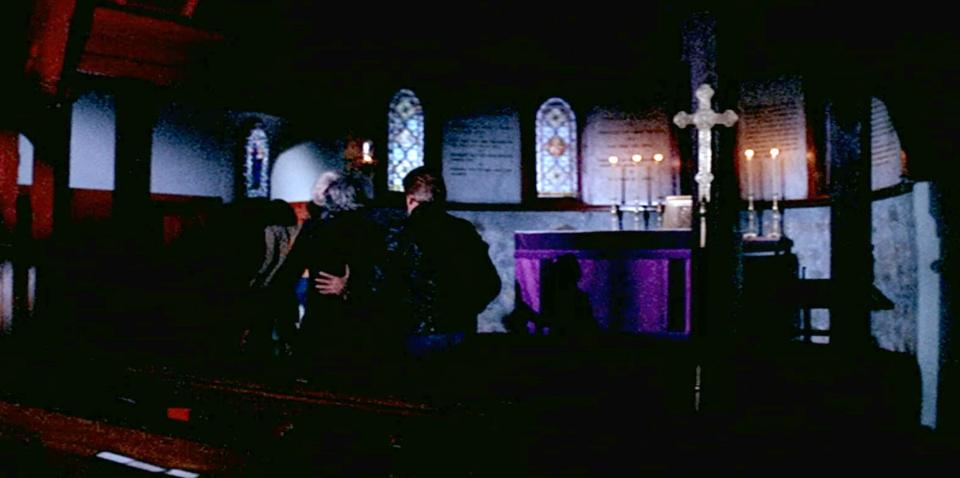
Antonio Bay Gift Corner (Laurel Canyon Country Store, Laurel Canyon, CA)
Perhaps the most famous of the locations featured in Carpenter's ghostly chiller, the Laurel Canyon Country Store is also the most fleeting of any locale showcased. Playing the role of the Antonio Bay Gift Corner, the Country Store gets a brief look-in during the opening montage of chaos descending on the small community under the cover of night.
Originally opened in the early 1900s as the Bungalow Lodge for hunters tracking game in the Hollywood Hills (then known for its remarkably dense population of deer), the building which portrays the Country Store was erected in 1929 after a fire devastated the area and leveled the mid-city retreat. It was in the early 1960s that the Canyon Store exploded in popularity, becoming the focal point of the burgeoning rock and folk music scenes in California. Musical artists like Jim Morrison, Bonnie Raitt, Joni Mitchell, David Crosby, Frank Zappa, Linda Ronstadt, and David Bowie (not to mention countless others) convened at the Laurel Canyon Country Store to jam, get high, and sleep with one another. It was, by all accounts, a great time to live in Los Angeles.
The Country Store figures prominently in some of the greatest music of the time. Joni Mitchell wrote "Ladies of the Canyon" about those she met at the store, while Graham Nash penned "Our House" for Crosby, Stills, Nash, & Young whilst sitting on the porch of the Country Store. But The Doors are the musical group most synonymous with the location, as their song "Love Street" famously features the line "the store where the creatures meet" as an allusion to the Country Store. Mama Cass Elliot of the Mamas and the Papas also wrote the group's song "Twelve Thirty" about her experience relocating from New York City to Laurel Canyon and living in the basement of the Country Store. The song, which features the chorus "young girls are coming to the canyon," was used rather wittily in Once Upon a Time in Hollywood during the scene in which the Manson girls and Tex Watson, indeed, come to the canyon and encounter Rick Dalton (Leonardo DiCaprio) with his pitcher of margaritas.
In real life, far from the cozy revisionist history of late-era Tarantino, the murders by Charles Manson's disciples in August of 1969 effectively put an end to the good times in the neighborhood. "Before 1969, my memories were nothing but fun and excitement and shooting to the tops of the charts and loving every minute of it," Michelle Phillips of the Mamas and the Papas told Vanity Fair in a 2015 oral history of Laurel Canyon's musical legacy. "The Manson murders ruined the L.A. music scene. That was the nail in the coffin of the freewheeling, let's get high, everybody's welcome, come on in, sit right down [lifestyle]. Everyone was terrified. I carried a gun in my purse. And I never invited anyone over to my house again."
The Laurel Canyon Country Store is now a destination for both the tourists who come to soak in the history within its walls and the Hollywood Hills locals stopping in for cigarettes and pastrami sandwiches. Even the employees at the Country Store might be somebody — Jennifer Aniston operated the register and stocked shelves there before finding fame and fortune in Friends.
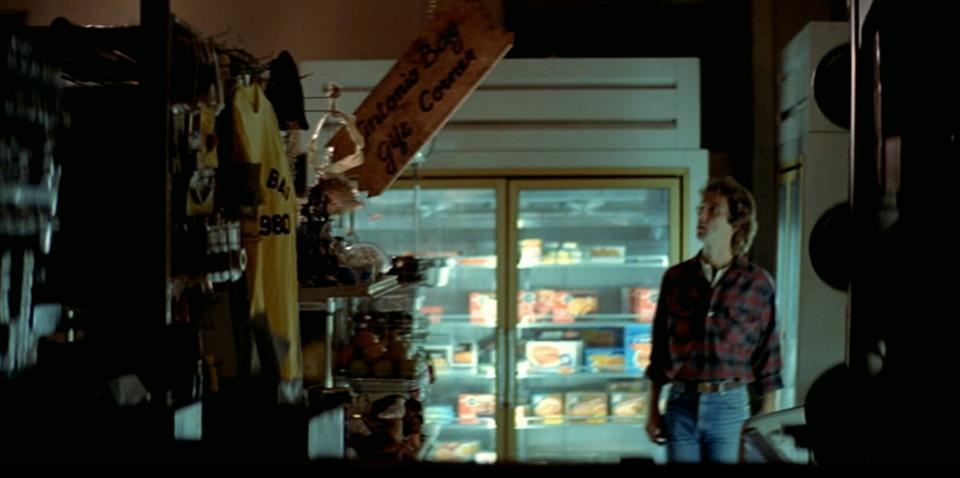
Farm House Restaurant (Due West Tavern, Olema, CA)
This historic Olema location once housed Jerry's Farm House, a beloved local hangout with a bar dating back to around 1865, though no one seems to know the exact date. When Carpenter shot The Fog, the restaurant was known as Farm House and had already undergone a makeover or two since the previous century. The space is now occupied by a different restaurant, Due West Tavern, which carries on the Farm House tradition of magnificently fresh seafood and strong cocktails. The parking lot — where Kathy Williams (Janet Leigh) and her doting assistant Sandy (Nancy Loomis) discuss preparations for Antonio Bay's centenary celebration — looks vastly different than it did in 1979, but the restaurant's bar looks more or less the same as it did during the scene in which Kathy receives news of her husband's demise aboard the Sea Grass.
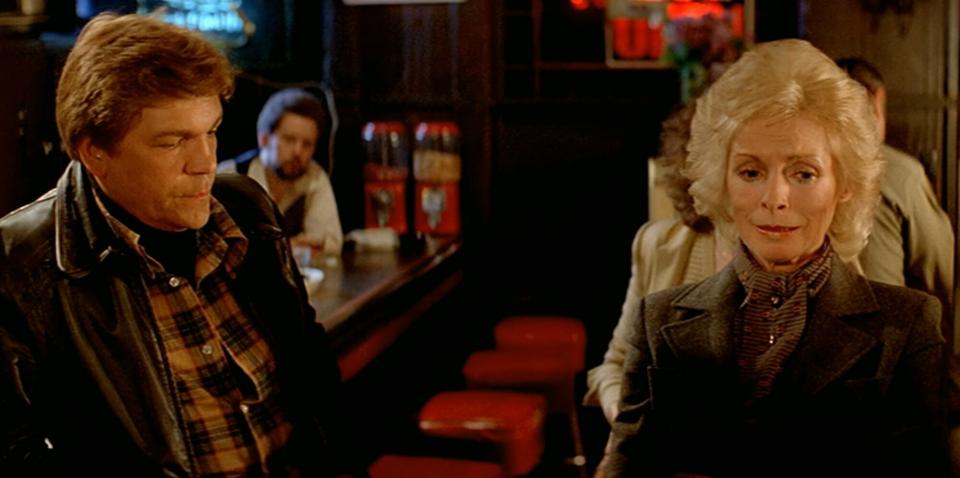
The Tides Inn (Inn at the Tides, Bodega Bay, CA)
Most famously featured in Alfred Hitchcock's The Birds, the Tides Inn (now known as Inn at the Tides) doesn't explicitly appear in The Fog. Rather, its Tides Wharf dock — located across the street and offering dramatic views of Westside Regional Park and Campbell Cove Beach across the inlet — that served as Carpenter's location for all, well, dockside scenes. Its most prolonged exposure in The Fog occurs during the initial sequence in which Elizabeth decides to forgo her Vancouver trip and accompany Nick into open water in an effort to recover the crew of the Sea Grass.
In The Birds, the Tides Inn stood in for all scenes taking place on the boat dock, as well as in the cafe or at the gas station. While the buildings have been remodeled several times since their film appearances, none of renovations were due to damage from the gas station explosion Hitchcock rendered for his avian thriller; that was achieved on a soundstage at Universal Studios, with backdrops used to place the actors in Bodega Bay.
The Master of Suspense apparently grew quite fond of the Inn during the shoot. A long time waitress at the Tides recalled Hitchcock ordering simple meals of "green beans and filet of sole and nothing else, Miss" during his frequent stops at the cafe, while the Inn's owner at the time, Mitch Zankich, appears in a brief speaking role in the final film and is the namesake of Rod Taylor's character Mitch Brenner.
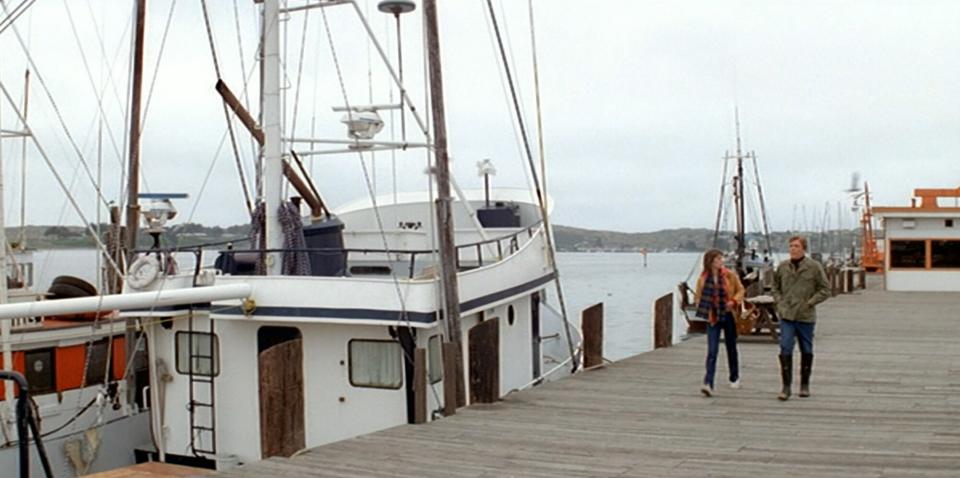
Antonio Bay's Spivey Point (Point Reyes Lighthouse, Point Reyes Station, CA)
When it served as the setting for KAB Studios at Antonio Bay's Spivey Point, the Point Reyes Lighthouse had only recently become automated. From the time of its completion in 1870 until 1975, the lighthouse guided ships to safety across the rugged coast of Point Reyes, whose headlands extend 10 miles into the sea and continue to pose a threat for ships to this day. Before construction of the lighthouse in the late-1800s, it's estimated that close to $750,000 (equivalent to nearly $55 million in 2022) worth of ships and their cargo were lost to the jagged bluffs. Prior to its automation, it required a team of four people to operate the first order light, radio beacon and the fog signal. (This would, hopefully, have the added effect of nipping any The Lighthouse-style creeping madness in the bud.)
The 308 steps leading down to (and up from) the lighthouse were added in 1939 (a year after electricity was installed) and are equivalent to climbing to the top of a 30-story building. The steps are open to the public from 10am-4pm on weekends, along with a visitor's center which features a small exhibit surrounding the history of the beacon. Now you, too, may experience Stevie's hellish descent into the office! Even if you are traveling during the week, the observation deck — from which you can gaze upon the lighthouse and the crushing surf below — is open every day from 6am-9:45pm.
Today, the Point Reyes Lighthouse remains more or less unchanged from its onscreen appearance, with the exception of a new coat of paint or two. Along with John Houseman's prologue and all of the sequences set inside of the character's homes, interiors for Stevie Wayne's workplace were filmed at Raleigh Studios in North Hollywood, with the set designed to resemble the actual interior of the lighthouse. (The coloring and the walls are notably different, but the layout is practically the same, only without the recording equipment in the loft.) The lighthouse rests 20 minutes by car from Drakes Beach, which is where Andy (Ty Mitchell) retrieves the haunted piece of driftwood from the Elizabeth Dane.
In 1991, the Point Reyes Lighthouse was listed on the National Register of Historic Places.
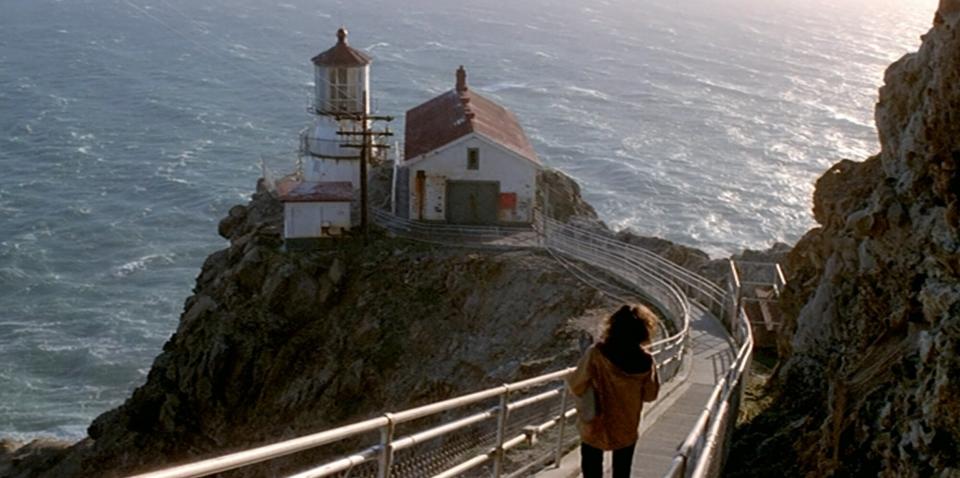
Point Reyes Station (California Highway 1, CA)
Once known as Olema Station, and named for the rail line which ran through (and gave life to) the town, Point Reyes Station was given its official name in 1883 by Galen Burdell, a dentist in nearby Novato and an owner of the train depot. Many of the town's early settlers were either Italian immigrants or Italian-speaking Swiss citizens, which accounts for the town's largely Italianate architecture, much of which dates back to the railroad-era.
A great deal of the town's history remains visible in the historic buildings still standing today. The Point Reyes Emporium (known since 1978 as the Cabaline Country Emporium and Saddlery) was built in 1898 and resides in the same spot, with only minor modifications made to the building over time. Likewise, the historic brick Grandi Building, built in 1915, looks much the same; though now disused, it once held a boutique hotel, ballroom and general store. Where businesses have changed over the years, the buildings housing them retain the names of their initial incarnations, such as the Hay Barn (now Toby's Feed Barn), the Livery Stable and the Old Creamery Building. A post office currently stands where the town's central rail line once did.
Carpenter returned to Point Reyes Station to film Village of the Damned, a pretty dull remake of Wolf Rilla's 1960 film of the same name that nonetheless features a fun Kirstie Alley performance and a jaunty score by Carpenter and Dave Davies. A great deal of Village is set outside during the daytime in various locales around Point Reyes Station and Inverness, taking much broader advantage of the setting than The Fog does. Shoreline Highway, Point Reyes Station's Main Street, figures prominently in the film, no more so than during the climax in which the adults and the evil kids face off in the middle of the road.
Today, Shoreline Highway remains unchanged; the Old Western Saloon, Cheda Chevrolet auto shop, and Grandi Building appear precisely as they did in Carpenter's two films. Though, should you choose to make the trip to Point Reyes Station, you're far more likely to encounter a monogrammed cheese knife or a strong cocktail (something about this region) than dastardly children or a malevolent fog.
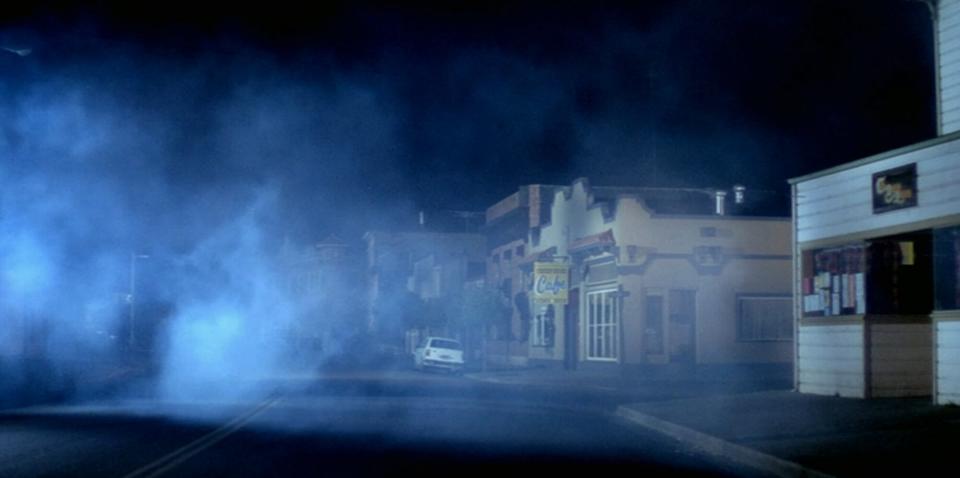
Related content:

